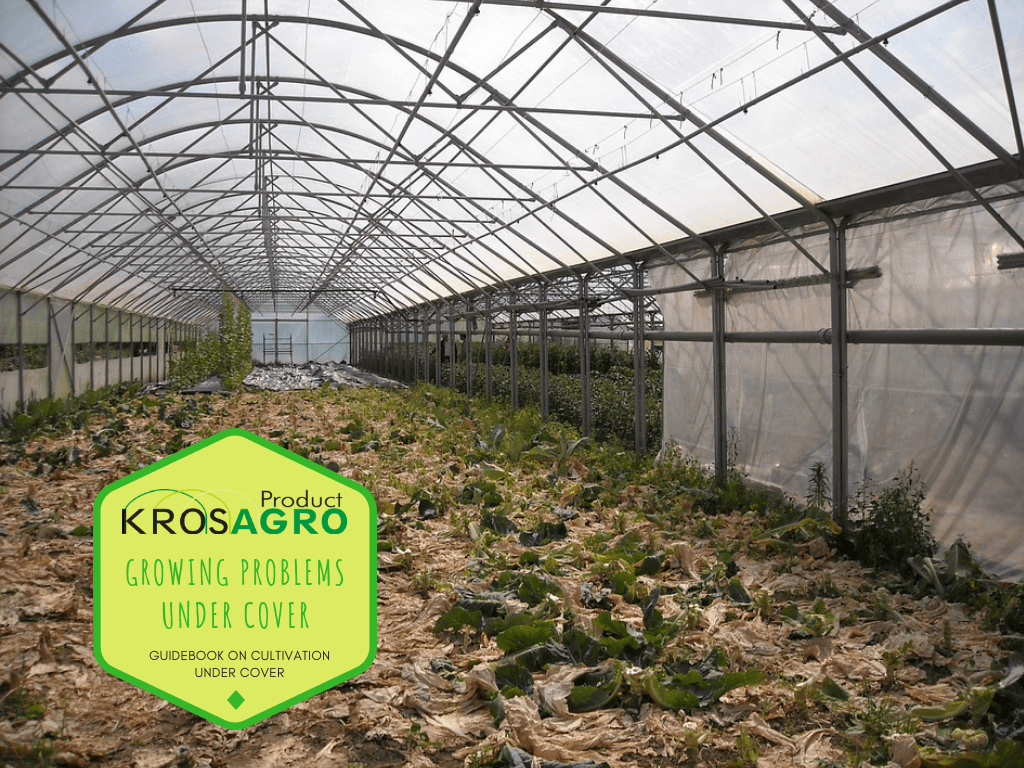As the cultivating season draws to a close, many gardeners are starting to think about a
polytunnel. For many, this is their first contact with garden greenhouses. It is also an opportunity to anticipate the various growing problems under cover.
Growing problems under cover
As with any activity, gardening has its complications. Many factors are completely independent from the producer, especially when growing in the open. Rain, gusts of wind, hail, low temperatures, pests and pathogens are good examples. But only a fraction of the problems ahead. Of course, there are a number of measures to immunize plants against fungi, diseases and pests. Many of them are synthetic substances and although, according to labels. They are not harmful to humans, the effects of their accumulation in the body will eventually appear over time.
One should not fall into a phobia of chemistry. As more and more consumers do: the fear that any commercial product is harmful is very irrational. But some “pro bio” customers opt for much more expensive products. Than standard goods, just for a simple BIO, ECO or
ORGANIC sticker.
It should be remembered that symbols associated with “healthy food”. May not be reliable and are often just a logo developed by graphic designers. On the other hand, it would be excessive to fall into extreme suspicion. There is, however, a way to consume healthy vegetables and fruits without spending too much: just start growing them in a greenhouse.
Healthy vegetables and fruits from the greenhouse
By growing crops under cover, the number of negative factors for plants is limited. Inside the polytunnel, the right micro-climate is maintained and fully controlled by the producer. In
multi tunnels equipped with lateral aeration, altering conditions inside is possible thanks to the ventilation. By controlling the entire cultivation process and becoming the producer of our own food. You can be sure that the vegetables and fruits in your garden are healthy and contain no harmful ingredients. Harvesting your spring vegetables in the garden is another advantage that saves us expenses in the store. It quickly turns out that it generates significant savings, especially if you convert this cost into ECO or BIO products.
Plant development in a greenhouse
With the first crops, you will experience the same troubles that are fortunately easy to solve. In order to obtain satisfactory results at the very beginning, it is necessary to take into account several important issues for the cultivation of plants.
Good plant development depends mainly on a good growing environment. Temperature and humidity of soil and air are just some of the factors that affect growth of vegetables and fruits. It is very important to know the climate that plants need, what elements should be present in the substrate, the specificity of care duties, etc. Beginners can find many valuable advice explaining the specificity of tunnels in the various guides on growing under cover.
Emerging plants fade rapidly and die
Substrate is one of the two most important resources without which cultivation is not possible. It is important to know your soil type and its properties, even before the assembly of the tunnel. Knowledge of pH and soil acidity is a priority. It may happen that the soil in the garden is not suited to the plants initially targeted. As a result, it requires improvement with higher quality substrate or adaptation to crop’s needs. The worst thing that can happen is that the land is saturated with pathogens and pests. Refreshing it will be time consuming and expensive. Such a situation can arise if the previous owner exploited the soil without feeding after each season.
If soil pH and its reactions are consistent, if macronutrients (nitrogen, phosphorus, potassium, magnesium, calcium and sulfur) and other elements (iron, manganese, copper, zinc, boron and molybdenum) are at a sufficient level, the problem may come from poor soil drainage. A soil that is too compact and heavy, with low permeability, is a significant obstacle to root development. It can also happen that water accumulates in some places and stagnates until it evaporates. To avoid this, before assembling the greenhouse, it is advisable to fully dig the ground, enrich the soil and wait for the proper absorption of inputs. Raised beds,
garden crates, addition of clay, gravel, etc. can solve the problem.
- The plants grow but remain weak
If crops develop little green mass and grow only upwards, it may mean that plants have a problem with access to light. If they are planted too thick, they compete with each other and suffocate. Just clear the rows and keep a good distance between the lines.
Tutorials and tips on crops under cover
To learn more about growing problems under cover or view Krosagro articles, we encourage you to visit the site frequently and subscribe to the YouTube, Twitter and FanPage pages which are regularly updated with new content. And in case of interest in the brand’s products, consult one of the dealers or the online store of
Krostrade greenhouses of the company KROSAGRO.
